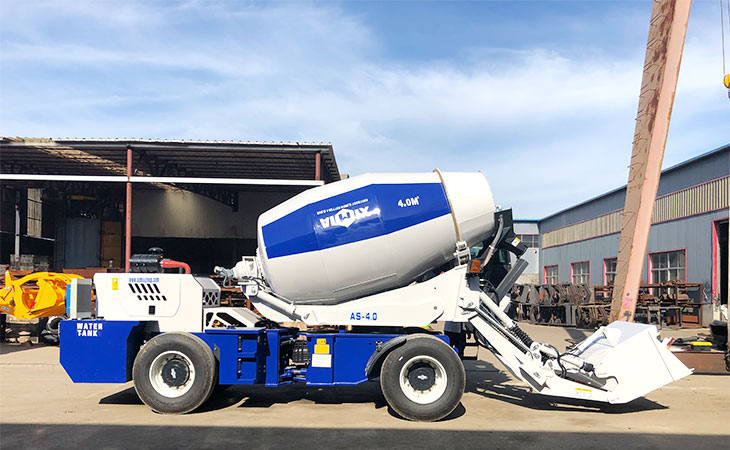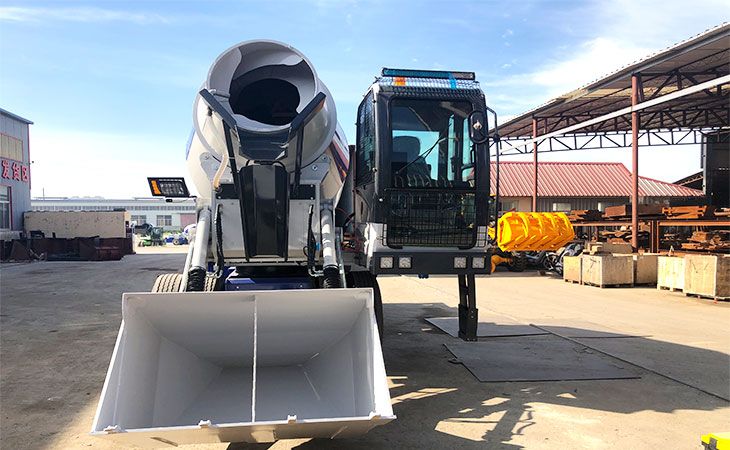Self-loading concrete mixers are versatile and efficient machines designed to streamline the process of mixing and transporting concrete on construction sites. To ensure optimal performance, longevity, and safety, regular repair and maintenance of these specialized equipment are essential.
Understanding the Components
Before delving into maintenance procedures, it’s crucial to understand the key components of a 3.5m3/h self loading mobile concrete mixer. These machines typically consist of a mixing drum, hydraulic system, transmission system, chassis, and control panel. Each component plays a vital role in the functionality and operation of the mixer.

Importance of Regular Maintenance
Regular maintenance is essential for preserving the efficiency and reliability of self loading concrete mixer with pump. Proper maintenance helps prevent unexpected breakdowns, reduces downtime, and extends the lifespan of critical components. Additionally, routine inspections enable operators to identify potential issues early and address them before they escalate into major problems.
Maintenance Checklist
A comprehensive maintenance checklist for self-loading concrete mixers may include the following tasks:
Cleaning and Lubrication: Regularly clean the mixing drum, hydraulic components, and transmission system to remove dirt, debris, and hardened concrete buildup. Lubricate moving parts, such as bearings, shafts, and gears, to reduce friction and prevent premature wear.
Inspecting Hydraulic System: Check hydraulic hoses, fittings, and cylinders for signs of leaks, cracks, or damage. Replace worn-out seals and hoses to prevent hydraulic fluid leakage and ensure the proper functioning of the system.
Checking Transmission System: Inspect the gearbox, drive shafts, and differential for wear and tear. Tighten loose bolts and fasteners, and replace damaged or worn-out components to prevent transmission failures.

Examining Chassis and Tires: Inspect the chassis for cracks, corrosion, or structural damage. Ensure that tires are properly inflated and free of cuts or punctures. Replace damaged tires and perform wheel alignment as needed to maintain stability and maneuverability.
Testing Controls and Electronics: Verify the functionality of control panels, switches, and electronic components. Test sensors, actuators, and safety features to ensure they operate correctly. Replace faulty components and recalibrate sensors as necessary to maintain accuracy and reliability.
Inspecting Concrete Mixing System: Check the condition of mixing blades, paddles, and discharge chutes. Remove any hardened concrete or debris that may obstruct the mixing process. Adjust mixing parameters and speeds to achieve the desired consistency and quality of concrete.
Performing Functional Tests: Conduct functional tests and trial runs to evaluate the overall performance of the mixer that has a low self loading concrete mixer truck price. Monitor hydraulic pressures, motor speeds, and temperature levels during operation. Identify and address any abnormal noises, vibrations, or malfunctions promptly.
Scheduled Maintenance Intervals
Establishing a scheduled maintenance interval is essential for ensuring consistency and accountability in maintenance practices. Depending on the usage and operating conditions, self-loading concrete mixers may require daily, weekly, monthly, or annual maintenance tasks.
Daily maintenance tasks may include cleaning the mixer drum, checking fluid levels, and inspecting safety features. Weekly maintenance activities could involve lubricating moving parts, inspecting hydraulic hoses, and testing control systems. Monthly and annual maintenance tasks may encompass more in-depth inspections, component replacements, and system upgrades.
Professional Support and Training
In addition to regular maintenance performed by operators, seeking professional support and training is beneficial for optimizing the performance and reliability of self-loading concrete mixers. Manufacturers and authorized service providers offer training programs, technical support, and maintenance guidelines to help operators troubleshoot issues and perform repairs effectively.
Conclusion
Regular repair and maintenance are essential practices for ensuring the efficient and reliable operation of self loading concrete mixers for sale. By adhering to a comprehensive maintenance checklist, establishing scheduled maintenance intervals, and seeking professional support when needed, operators can minimize downtime, extend equipment lifespan, and maximize productivity on construction sites. Investing time and resources in maintenance efforts ultimately contributes to safer, more cost-effective, and sustainable construction practices.